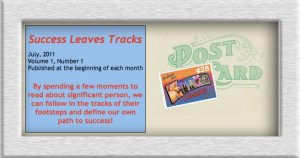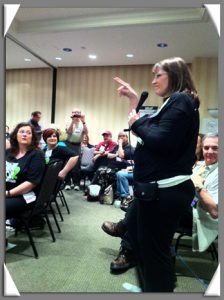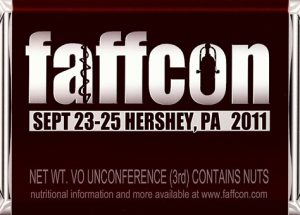When I wrote the article 5 pieces of e-mail marketing advice, I was referring to those times when you send a personal message rather than a general newsletter to your voiceover clients and prospects.
As you might expect, an e-mail newsletter has its own considerations. Since newsletters can be a great way to unobtrusively remind people that I am a voice talent, I have just started publishing a monthly newsletter. I want to share 3 things I learned in this process in case you want to create one, too.
1. Automated software is a must.
Lately, I’ve been hearing radio ads from ConstantContact — yes, RADIO ads about email marketing! I’ve also been seeing banner ads for multiple email solutions on numerous other sites. Email marketing systems have obviously become a big business since people continue to have success in using email as part of their marketing plan.
You could send mail to your list using your own database and email client like Outlook. Another, more popular approach is to upload your database to an on-line service. Since on-line email services are so prevalent and offer an array of built-in features including templates and tracked statistics, it makes a lot of sense to use one if your finances can accommodate it. You can try the systems at no cost for a limited time or number of users in order to decide the best one for you.
Here’s some research that may help you decide which one to use.
Earlier in the year, I saw a question in a LinkedIn group in which the participants were asked for pros and cons about email marketing systems. An assistant started compiling the results for me and got through 254 of the hundreds of responses. I had no idea so many email systems exist! If you’re interested, here’s the full list from those 254 comments.
Of the 84 companies found in those first 254 responses, the top 5 companies, representing 73% of the total votes in my list, were:
ConstantContact 41 votes
iContact 23 votes
MailChimp 22 votes
AWeber 18 votes
MyEmma 11 votes
Aside from this list, you can do a Google search and quickly find a chart like this one that compares numerous features across multiple systems.
2. Permission-based marketing is a BIG deal. A VERY BIG DEAL.
You’ve probably noticed that most emails from companies include a link to unsubscribe to mailings. That feature is mandated in the CAN-SPAM Act of 2003.
Beyond that law, though, people have extremely strong feelings about being added to mailings without their permission. In fact, adding someone to your mailing list without asking them first is quite the polarizing issue.
I can make this assertion after reading questions about creating mailing lists in multiple LinkedIn forums. Each time, the question elicited extremely passionate responses. I decided to create a LinkedIn poll in which I asked the question:
- You’re connected on LinkedIn or other sites
- They gave you their business card
- You have exchanged e-mail messages
- All of the above
- None of the above — they need permission
Of the 14 respondents, 9 voted NONE OF THE ABOVE, with ALL OF THE ABOVE being the choice of the other 5 participants.
The comments on the poll page linked above and in a similar question I asked in 2008 when I first considered a newsletter give you a good snapshot of opinions on both sides.
I decided to use iContact for my newsletter host, and I felt they went overboard on ensuring that you have permission to send the message to each contact. You have to click a checkbox in several places to validate that you have the reader’s permission.
Here’s what happened to me when I set up my contact list in the system:
- I removed from my database a number of voiceover clients that I’ve dropped and prospects with whom I hadn’t established a relationship. In some cases, I had been out of touch with a person for 2-3 years, so I removed their names, too.
- I uploaded my list of solid contacts from my stand-alone database.
- I couldn’t add a name to my iContact mailing until the person confirms I have their permission, so I decided to let my contacts confirm their mailing addresses could be added to the newsletter list before sending them the newsletter.
- iContact made me initial that I could contact the person even when I was sending the pre-addition confirmation letter! That’s a Catch-22 if ever there was one!
3. Timing is [not] everything.
Voice talent live by the clock. Radio and tv ads need to be 15, 30, or 60 seconds. Agents need auditions at a certain time, and clients expect a fast-turnaround for recordings.
Email has its own timing. I’ve read that the best time to send your message is on a Tuesday morning. I planned for my first issue of Success Leaves Tracks to be distributed on Tuesday, 5 July.
The only problem was that I didn’t realize that I was going to hit the permission-based wall.
I thought I could add my database during the July 4th holiday weekend and have the newsletter appear in mailboxes when people returned to work on Tuesday. Nope. I needed their permission. I ended up sending out the “please confirm it’s okay to mail to you” messages on Friday, 1 July.
Let’s just say that I didn’t get quite the enthusiastic response I had hoped for!
In hindsight, I wouldn’t have sent my confirmation notices on any Friday, particularly one before a holiday weekend! I’m sure that many people deleted the message and moved on, which limits my potential to send them messages through iContact.
Even though my timing in setting up the database could have been better, I’m confident that the newsletter will find the right audience. After all, in the words of Buddha:
An idea that is developed and put into action
is more important than an idea that exists only as an idea.
If you’re planning to start or are already publishing a newsletter for your voiceover business, please leave a comment on the blog!





